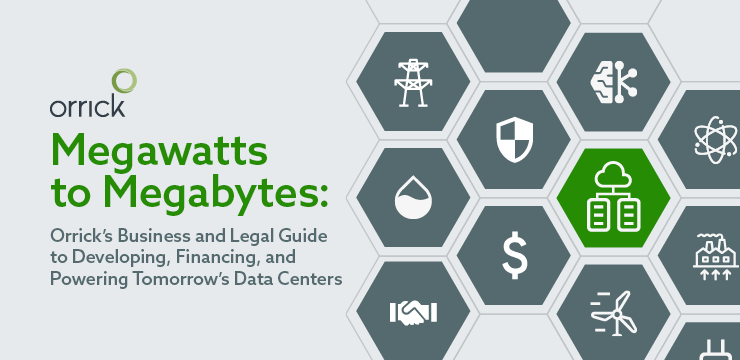Energy & Infrastructure

Megawatts to Megabytes: Orrick’s 2025 Guide to Developing, Financing & Powering Data Centers
2 minute read | July.15.2025

2 minute read | July.15.2025

8 minute read | August.07.2025

24 minute read | April.15.2025
2 minute read | April.07.2025

1 minute read | August.07.2025

3 minute read | August.04.2025

2 minute read | July.28.2025

The project is set to deliver clean electricity to six million homes and is a cornerstone of the UK’s ambitions for energy security and net zero.
2 minute read | July.08.2025

2 minute read | July.07.2025

3 minute read | July.02.2025

2 minute read | July.01.2025

by Mike Delikat, Hayden Goudy, Tierra D. Piens and Meghan Conway
9 minute read | June.13.2025

2 minute read | May.16.2025

This verdict will ensure that patients continue to have access to Regeneron’s lifesaving, cholesterol-reducing drug Praluent.